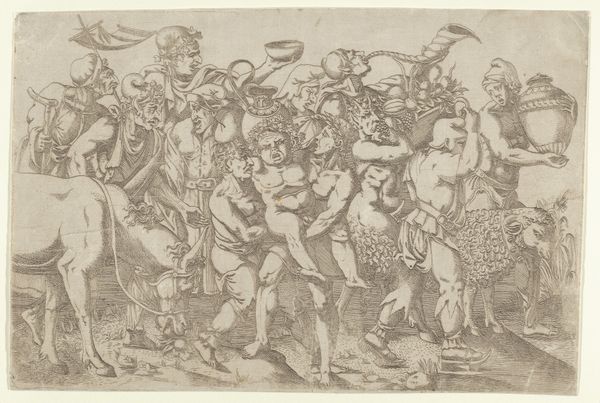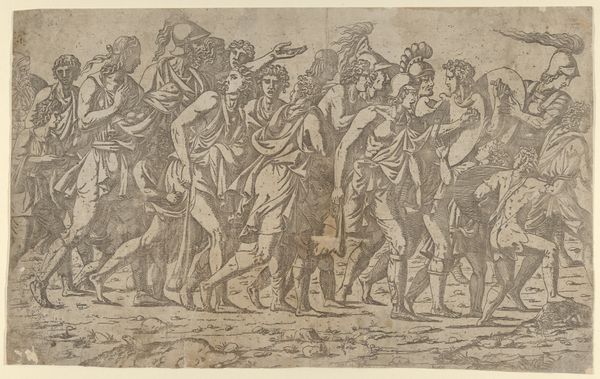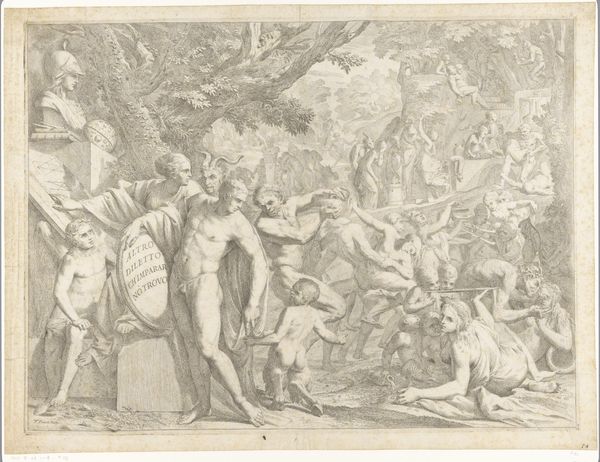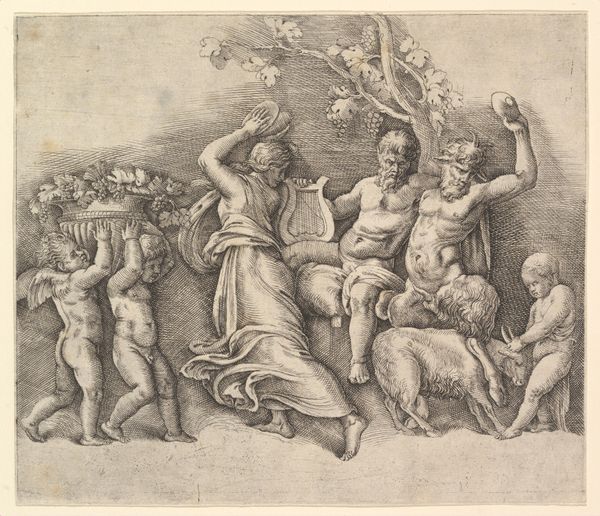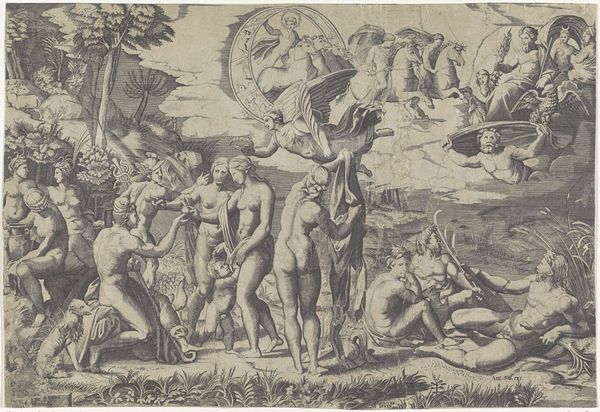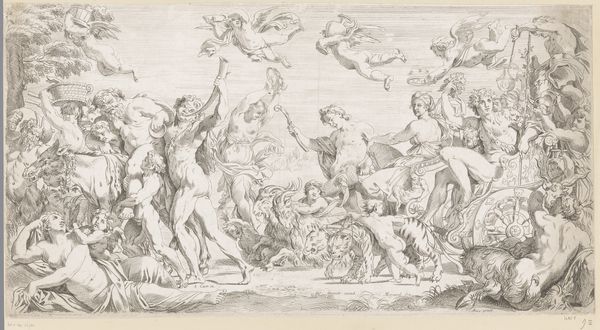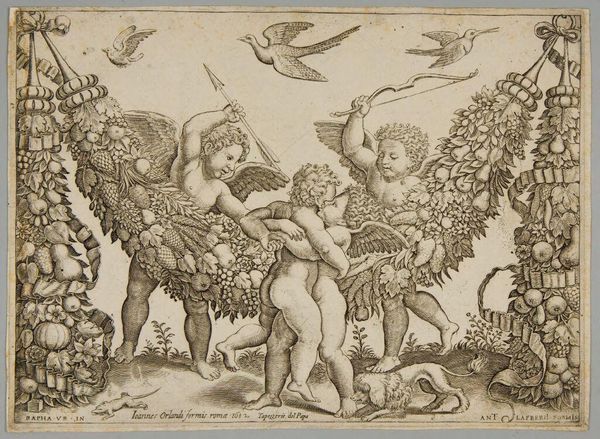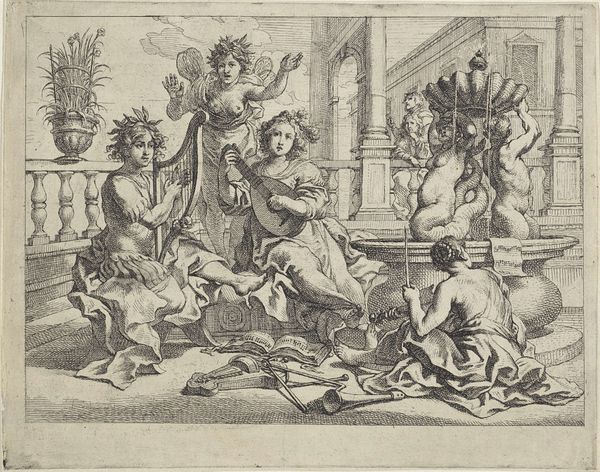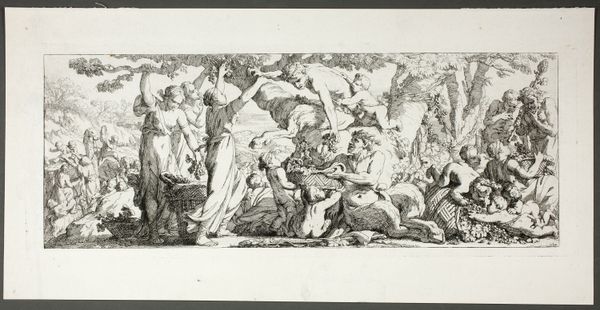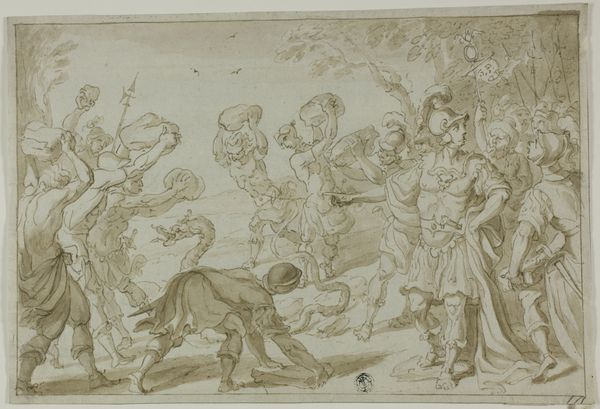
drawing, ink
#
drawing
#
ink painting
#
pencil sketch
#
etching
#
figuration
#
11_renaissance
#
ink
#
line
#
history-painting
#
italian-renaissance
#
watercolor
Dimensions: height 124 mm, width 197 mm
Copyright: Rijks Museum: Open Domain
Curator: Here we have Andrea Boscoli's "Keizer Trajanus tussen Roma en Victoria," dating from between 1570 and 1607, created with ink. It's a really compelling drawing! What's your first impression? Editor: Mmm, sepia tones and dramatic flair! I feel like I've stumbled onto a stage during a historical pageant. It's got that antique photographic feeling with all its washes and sketches. Curator: The sepia certainly gives it that classical feel, connecting it visually to ancient artworks unearthed during the Renaissance, which, I imagine, it consciously references in terms of symbolic imagery. Editor: Symbolism for sure—those footwear decorations make me laugh. It is all a bit staged in a way, but not without energy and movement in the scene overall. And speaking of the theatrical, what do Roma and Victoria represent in this context? Curator: Roma, of course, symbolizes the city of Rome and its empire, and Victoria represents victory itself—triumph over enemies. Trajan is positioned between them to emphasize his strength, virtue, and divinely sanctioned rule. It reinforces the ideology of Roman power. It’s like the 16th-century version of propaganda art! Editor: Power, sure, but do you also feel an undercurrent of vulnerability? Look at the fallen figure being trampled by the horse. It feels like even in triumph, there's a cost, a recognition of the defeated. Is this intentional I wonder? Curator: Absolutely, I believe so. Even as it glorifies Roman authority, it indirectly shows the conquered as an inherent element to Roman triumph. The narrative echoes how emperors would temper celebration of victories with images of loss. It acknowledges, however subtly, that empire-building involved immense loss, trauma, and brutality. Editor: Acknowledgment or just window-dressing, perhaps. All art reflects both overt intention and buried presumptions I suspect, so this is all interesting stuff. Curator: It’s interesting how these Renaissance drawings can condense complex historical and political messaging through accessible symbolic language that would have been well-understood at the time. Editor: That's an incredibly insightful interpretation, highlighting both artistic intention and a quiet resistance to purely celebratory narratives. Food for thought! Curator: Indeed. It seems like with even art designed to venerate rulers, cultural memory ensures layered and lasting conversations through symbols.
Comments
No comments
Be the first to comment and join the conversation on the ultimate creative platform.
